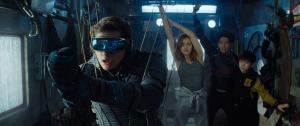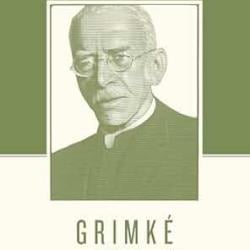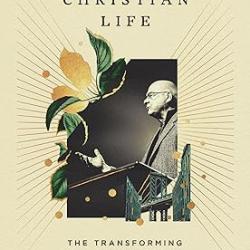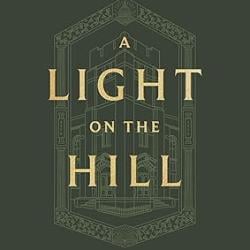By Christian Hamaker
I’ve seen Steven Spielberg’s Ready Player One, and I’m here to tell you it’s … exhausting.
That sounds worse than I intend it to be. The filmmaker, who made his name on massively popular films like Raiders of the Lost Ark, Close Encounters of the Third King and E.T.—movies that appealed to viewers of all ages—has made such fare infrequently in recent years, and to diminishing returns. The Adventures of Tintin, which Spielberg co-directed with Peter Jackson, was a break-even proposition at best in North America (what became of those planned Tintin sequels?), while Spielberg’s most recent attempt to appeal to children, an adaptation of Roald Dahl’s The BFG, flopped at the box office. (For the record, I saw both films in my 40s and am a big fan of Tintin; The BFG is more sedate, but not without its charms.)
Instead, the aging Spielberg has focused most of his energies on stately dramas that have been nominated for lots of Oscars: Lincoln, Bridge of Spies and The Post.

So it was somewhat surprising when Spielberg pursued an adaptation of Ernest Cline’s novel, Ready Player One—an adult book about virtual reality that includes several throwbacks to 1980s pop-culture. If not aimed particularly at kids, the story plays as a nostalgia trip for Gen Xers and for the games, music and movies of their youth.
And what filmmaker dominated the youthful period of Gen Xers? That’d be one Steven Spielberg, who gets his own throwback moments in Ready Player One. So does Back to the Future director Robert Zemeckis, with a turn-back-time device dubbed the Zemeckis Cube and a verbal reference to “McFly”—a key character name in that film. (Say, who was executive producer of Back to the Future? Wait: I remember.) We also get some riffs on John Hughes’ The Breakfast Club and Ferris Bueller’s Day Off and the chest-bursting scene from Ridley Scott’s Alien (be cautious about bringing young kids to this one). Most memorably, the characters in Ready Player One find themselves, at one point, immersed in scenes from Stanley Kubrick’s adaptation of Stephen King’s The Shining, turning the horror of those scenes into something humorous.
We get to that point after meeting Wade, who lives in the Stacks, a depressing dwelling in 2045. But Stacks residents, and pretty much everyone else, prefer an alternate reality. People, we’re told, had “given up on trying to fix problems and just tried to outlive them.” So they escape into a virtual reality world, donning VR goggles to enter the Oasis, created by James Halliday (Mark Rylance). The now deceased Halliday has left behind an Easter egg in Oasis, and those in pursuit of said egg are dubbed “gunters” (egg hunters). Trying to keep him from completing the challenge is Nolan Sorrento (Ben Mendelsohn—good as always), head of operations at Innovative Online Industries.
In Oasis, everyone takes on an avatar, so when Wade teams up with Artemis (Olivia Cooke) and wants to meet her in real life, she demurs. She doesn’t look like her avatar, Artemis tells Wade. He’ll be disappointed. It’s a poignant moment and a theme—how virtual “reality” distorts flesh-and-blood realities—that deserves more in-depth treatment than it receives in Ready Player One, which is very busy whisking us through Oasis once Wade starts a mission to pass three tests to garner three keys that unlock magic gates. So off we go—pursued by the T-Rex in Jurassic Park (a Spielberg film!), King Kong (the beast’s attacks reminded me of the 1976 film version of Kong; the sequence that’s paid homage may have been repeated in Peter Jackson’s more recent Kong remake, but if so, I’ve blocked it from memory, along with the rest of that film), the Iron Giant and even Chucky from the Child’s Play movies (leading to a screamed f-bomb by one of the film’s characters).
The film has a resolution, and it’s frequently fun to go along for the ride in getting there. But why, only two days after seeing it, has it so quickly evaporated from my mind? Likely because the visual assault—an approach that’s worked for me in films such as the Wachowskis’ Speed Racer—is just too much after an hour or so of this 140-minute feature. I wanted to care about these characters, but instead ended up playing a game of name-that-character/movie that left me in the dust early on.
That’s a shame, because Wade and his “high five” teammates had promise to be more than one-note characters. The film just doesn’t have the time to develop anyone, or any of its themes, between its extended set pieces. There’s enough in Ready Player One that I enjoyed to qualify it for a future viewing. But I suspect the chances of it improving are no higher than the chances it’ll be diminished by further exposure.
I’m glad Spielberg still has the energy and chutzpah to try to pull off a film as visually complex and demanding as Ready Player One. I want the Spielberg of my youth to dazzle me the way he dazzled me when I was an adolescent. But I’m also happy that, in recent years, he’s been hitting home runs—or at least doubles and triples—with films that appeal mainly to older viewers. I’ll gladly take a highly effective bit of “Oscar bait” like The Post, which gives me space to think while watching it, over a too busy, if sometimes impressive, fireworks display like Ready Player One.












